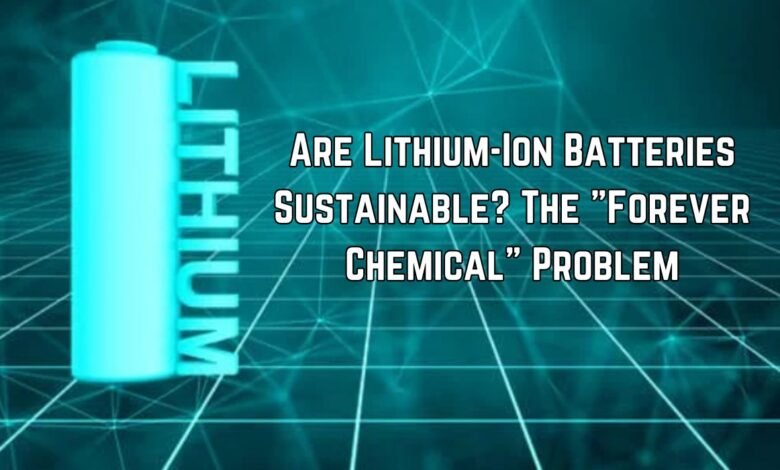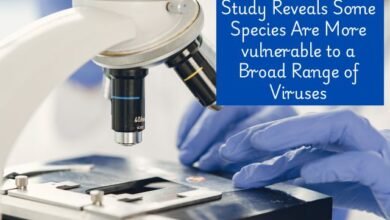Are Lithium-Ion Batteries Sustainable? The “Forever Chemical” Problem
Green dream or hidden nightmare? Uncover the 'forever chemical' issue in lithium-ion batteries.

According to new research rechargeable lithium-ion batteries—which are used in electronics, electric cars and renewable energy storage—may be a factor in the “forever chemicals” that are polluting soil and waterways.
Numerous per- and polyfluoroalkyl compounds (PFAS), which have been used for decades to give products resistance to heat, stains, and water, are referred to as Forever chemicals. Bis-perfluoroalkyl sulfonimides, or bis-FASIs are a particular subclass of PFAS that are now utilized in lithium-ion batteries as binders and electrolytes.
Bis-FASIs have been discovered in soil, sediment, water and snow close to manufacturing facilities, according to recent study published in the journal Nature Communications. Scientists also discovered these compounds in liquids that were leaking out of landfills. This suggests that rechargeable batteries may be a growing source of these persistent pollutants.
This problem might worsen when more objects in our daily lives like automobiles and buildings become electric
Together, this suggests that lithium-ion batteries could be a source of forever chemical pollution throughout their lifecycle. As more of our lives become electric, from cars to homes and buildings, this issue could grow.
“This isn’t against clean or sustainable energy. It’s about including environmental risk assessments in our infrastructure,” says lead author Jennifer Guelfo, an assistant professor of environmental engineering at Texas Tech University.
“This is just the starting point,” says P. Lee Ferguson, another study author and an associate professor at Duke University. “I hope it brings more attention to these compounds in both clean energy and consumer electronics.”
The researchers took water, sediment, and soil samples from 87 locations in Minnesota, Kentucky, Belgium, and France between January and October 2022. They focused on areas near manufacturers of forever chemicals like 3M and Arkema. They found bis-FASIs concentrations in the parts per billion (ppb) near these facilities. “You don’t just find that typically as background concentration,” Guelfo says. “Parts per billion usually indicates some form of impact.”
According to Guelfo, the PFAS contamination from their study is less than what you’d find from a release of firefighting foam, which can have levels in the parts per million, about a thousand times higher than the bis-FASI concentrations found near manufacturers. However, the contamination they found is still much higher than the limits set by the Environmental Protection Agency (EPA) for other types of PFAS in drinking water. The EPA’s limit is four parts per trillion for two common types of forever chemicals.
There are no federal regulations yet for bis-FASIs, which haven’t been used as widely as other PFAS. Because PFAS have been used in products like nonstick pans, food packaging, fabric protector, and dental floss, certain types of PFAS have likely already entered most Americans’ bloodstreams.
Scientists are still studying how PFAS exposure affects people, and even less is known about bis-FASIs specifically. High exposure to more common PFAS has been linked to increased risks of certain cancers, liver damage, high cholesterol, and reproductive health issues, including lower infant birth weight. The new research suggests bis-FASIs could persist in the environment for a long time but might be cleaned up using similar methods to those used for other forever chemicals in drinking water.
Given the diversity of PFAS and growing concerns about their potential risks, researchers suggest addressing issues now rather than waiting for problems to emerge later. 3M, facing lawsuits related to PFAS production, plans to phase out forever chemicals by next year and clean up pollution near its facilities. The company also intends to stop manufacturing bis-FASIs, according to an email to The Verge. Arkema did not respond to The Verge’s request for comment.
“I think we should be proactive in reducing environmental releases of PFAS instead of waiting for decades of toxicology research to show the need to mitigate them in drinking water,” says Guelfo.
Lithium-ion batteries are increasingly essential for electric vehicles, solar, and wind power. In a study, researchers tested 17 different batteries from devices like laptops, smartphones, and electric vehicles, finding bis-FASIs in 11 of them. Since only about 5 percent of lithium-ion batteries are recycled, they also examined landfills and detected bis-FASIs in leachates collected from North Carolina, reaching parts per billion concentrations.
“This study is quite compelling,” said A. Daniel Jones, associate director at the Michigan State University Center for PFAS Research, who wasn’t involved in the research. “It highlights a lesser-known PFAS chemical and suggests it moves easily through the environment. It underscores the need for better understanding of lithium battery life cycles.”
- How your Brain Decides what to keep
- Egalitarian Surprise: Neolithic Era Men, Women, Immigrants Had Similar Diets
- Galaxy Observations Challenge Current Understanding of Dark Matter
FAQ
Are lithium-ion batteries sustainable?
Although switching to lithium-based batteries for all fossil fuel-powered gadgets may not be the best course of action for the planet, lithium-ion batteries can be utilized as a component of a sustainable solution. Although it is a natural resource that could run out, there isn’t currently a shortage.
What Causes Lithium-ion to Age?
Ion mobility between the positive and negative electrodes powers the lithium-ion battery. Theoretically, a mechanism like this should function forever, but with time, cycling, high temperatures, and age reduce its effectiveness.
What is the main issue with lithium-ion batteries?
Main cause of lithium-ion battery overheating is a condition called thermal runaway. The battery functions through a chemical reaction that is aided by the high heat in this process. This leads to a deadly spiral where more heat and chemical reactions are produced.
What is a lithium-ion battery’s greatest drawback?
Although lithium batteries are normally safe, they can occasionally catch fire or explode due to overheating. The occurrences are frequently connected to poor manufacturing quality, incorrect usage, or outside variables like physical harm.
Why don’t we recycle batteries made of lithium?
Batteries that include lithium-ion (Li-ion) and gadgets that use them shouldn’t be disposed of in domestic trash or recycling bins. They may start fires at recycling facilities and landfills, or even during transit.
Is there any alternative to lithium?
Energy firms all over the world are already storing renewable electricity in Faradion’s sodium-ion batteries. Furthermore, they are only one substitute for lithium, which the European Union classified as a “critical raw material” in 2020 due to our rising and severe reliance on it.



